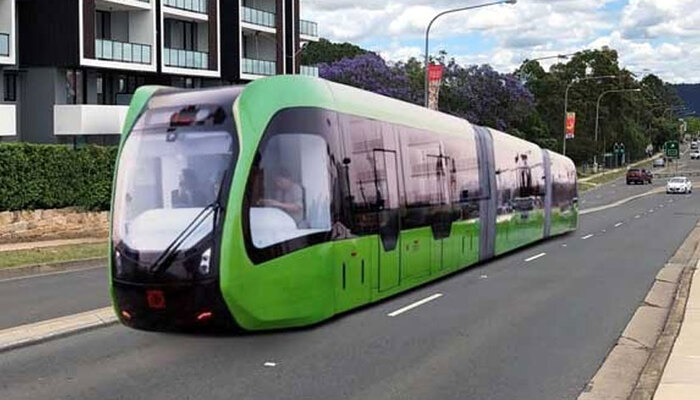Pakistan is stepping into the future of public transportation with its first solar metro—a trackless and ticketless system now under pilot testing in Lahore. The revolutionary project marks a major shift in how urban transport operates in the country, using clean energy and smart technology to reduce pollution and improve mobility.
What Makes It Unique?
The new system, officially named the Super Autonomous Rail Rapid Transit (SRT), is a high-tech metro that doesn’t require physical tracks. Instead, it runs on roads using Virtual Track Technology. Equipped with advanced sensors, GPS, and digital mapping systems, the vehicle mimics the experience of a traditional subway while operating on existing road infrastructure.
This approach removes the need for expensive rail construction and long-term disruptions to city traffic. It is not only efficient but also cost-effective, particularly for a densely populated city like Lahore.
Read: IHC Issues Contempt Notices in Aafia Case
Pilot Project Begins Near Airport
The SRT’s first demonstration vehicle has already arrived in Lahore and is undergoing pilot tests near the Lahore Airport. This phase will evaluate how the metro performs on local roads and how it can be integrated into the city’s existing transport system.
Officials said the vehicle is battery-powered, making it completely emission-free. The solar-powered feature allows it to operate using energy harnessed from solar panels, significantly cutting down fuel consumption and carbon emissions.
A Joint Initiative with China
The project is the result of collaboration between Pakistan and China. Senior officials from both countries attended the recent launch ceremony, underscoring the importance of the partnership. China has already implemented similar systems in various cities, and Pakistan now hopes to follow suit.
Speaking at the event, a senior transport official said, “This is a major leap for urban transportation in Pakistan. We are committed to green solutions and innovation, and the solar metro reflects that vision.”
How the System Works
Although it resembles a tram, the SRT vehicle does not require tracks. It follows a digitally pre-programmed path using its onboard navigation systems. Sensors embedded within the vehicle help it detect road conditions, obstacles, and traffic flow. GPS integration ensures it remains on course without any manual steering, making it semi-autonomous.
The ticketless feature is another innovation. Riders will board and exit through automated gates, with fares charged digitally through cards or mobile apps. This will ease congestion and reduce delays caused by manual ticketing.
Environmental and Economic Impact
The solar metro could drastically lower pollution levels in Lahore, a city that frequently ranks high for poor air quality. By shifting from fossil fuel–based transport to electric vehicles, officials hope to promote a cleaner, greener city.
Additionally, the use of virtual tracking removes the need for massive infrastructure investment. Building traditional rail systems can take years and cost billions. In contrast, the SRT can be rolled out faster and at a fraction of the cost.
Energy efficiency is also a major plus. By relying on solar energy, the system avoids fuel dependency and reduces operational expenses in the long run.
A Step Toward Smart Cities
The introduction of the SRT is being seen as a step toward transforming Lahore into a smart city. The technology involved allows for integration with other smart systems like traffic control, emergency services, and environmental monitoring.
Public response so far has been positive. Many have welcomed the move, especially in light of rising fuel prices and traffic issues in major urban areas.
Looking Ahead
If the pilot project proves successful, Lahore could soon see a full-scale rollout of the solar metro, possibly expanding to other cities in the future. The government plans to study the pilot results before making major investments or policy changes.
As Pakistan embraces sustainable innovation, the solar metro in Lahore could become a blueprint for future transportation projects nationwide.
Follow us on Instagram, YouTube, Facebook,, X and TikTok for latest updates
